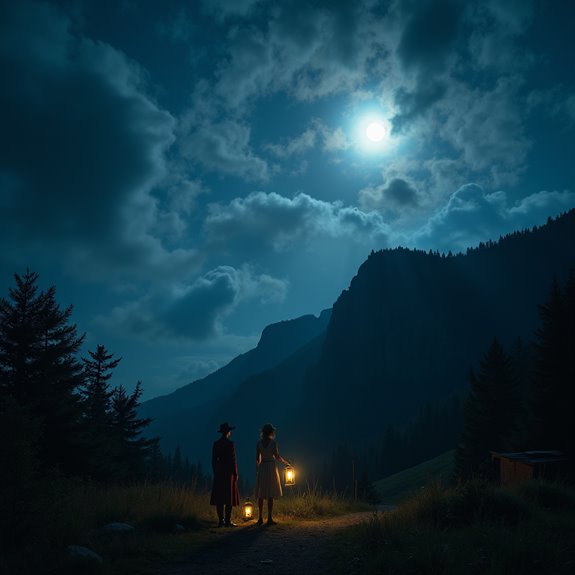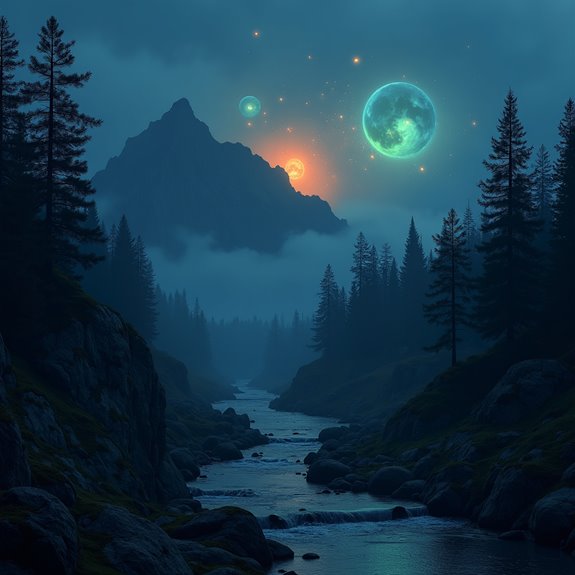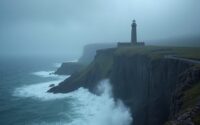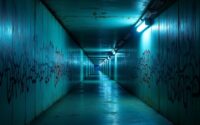Have You Seen the Lights Over Brown Mountain?
The lights over Brown Mountain have captured the fascination of many. Witnesses claim to see glowing orbs floating in the night sky. These occurrences date back to the early 20th century, generating numerous accounts and theories. Some attribute the lights to natural phenomena, while others lean toward the supernatural. The mystery remains unsolved, inviting both skepticism and intrigue. What happens when one stands in the dark, hoping to catch a glimpse of these ethereal lights?
Introduction

The Brown Mountain lights, a phenomenon that has intrigued locals and visitors alike for centuries, appear intermittently in the remote hills of North Carolina. These mysterious lights typically manifest after dark, often described as glowing orbs dancing among the mountain ridges. Rumors about their origin abound, ranging from Native American legends to ghostly apparitions. Many observers report feelings of awe and disbelief upon witnessing these ethereal displays. People climb to lookout points or gather at nearby campsites, hoping for a glimpse. Scientists, too, have attempted to explain this enigma, yet no conclusive evidence emerges to satisfy skeptics. Whether they stem from natural occurrences or something more supernatural, the lights continue to draw attention, weaving an enthralling narrative into the fabric of Appalachian folklore.
Early 20th-Century Sightings

How did the early 20th-century sightings of the Brown Mountain lights shape public fascination with this phenomenon? During this time, multiple reports emerged from locals and curious visitors alike, drawing attention to the mysterious orbs that danced over the mountains. Newspapers began publishing these accounts, fueling intrigue among residents and travelers. The lights appeared unpredictably, often described as glowing spheres or streaks of color, which led to numerous speculations about their origins. Some thought they were manifestations of spirits, while others considered scientific explanations, such as gas emissions. This blend of mystery and media coverage established a growing cultural narrative surrounding the lights, enchanting the imaginations of those who sought to witness this enigmatic display. The phenomenon quickly became an iconic element of local lore.
Notable Cases or Sightings

As curiosity about the Brown Mountain lights grew, several notable cases captured the public’s attention and further fueled fascination with the phenomenon. In 1922, a group of hikers reported seeing a series of bright, floating orbs dancing along the mountainside, igniting discussions in local newspapers. A decade later, in 1936, a team of scientists tried to investigate the lights but left puzzled after failing to replicate the sightings. More recently, in 2014, a family camping nearby recorded a series of glowing formations, sparking interest on social media. Each of these sightings brought a mix of excitement and skepticism, with witnesses sharing vivid descriptions that turned the Brown Mountain lights into an enduring mystery, drawing both enthusiasts and curious onlookers alike to the area.
Common Theories or Explanations
While many remain captivated by the mystery of the Brown Mountain lights, several theories attempt to explain the phenomenon. Some believe the lights are caused by the combustion of gases from decomposing organic materials in the earth. Others argue that atmospheric conditions, such as temperature inversions, create illusions that manifest as glowing orbs. A more tangible theory links the lights to the presence of train headlights reflecting off the mountains, though skeptics dismiss this as overly simplistic. Additionally, some enthusiasts suggest supernatural explanations, positing that the lights may be spirits or energy from the past. Despite the various theories, no single explanation has gained universal acceptance, leaving the Brown Mountain lights an enduring enigma.
Frequently Asked Questions
Are There Any Safety Concerns When Viewing the Lights?
When viewing mysterious lights, one shouldn’t ignore potential safety risks. Uneven terrain, wildlife, and isolation can pose hazards. It’s wise for viewers to stay alert, remain in groups, and keep flashlights handy for protection.
How Can I Best Photograph the Lights?
To best photograph the lights, she recommends using a tripod for stability, setting a longer exposure for clarity, and adjusting the ISO for low light. Experimenting with different angles will enhance the overall composition too.
When Is the Ideal Time to See the Lights?
The ideal time to see the lights often occurs on cool, clear nights, especially in fall and winter. Locals believe atmospheric conditions play a key role, making those months particularly promising for sightings.
Are There Guided Tours Available for Viewing the Lights?
Yes, several local companies offer guided tours for those wanting to see the lights. They provide insights and historical context about the phenomenon, enhancing the experience for visitors keen to witness this mysterious occurrence.
Is There a Specific Location for Optimal Viewing?
For ideal viewing, visitors often gather at an overlook near Brown Mountain. This spot offers panoramic views and enhances the chances of witnessing the mysterious lights, making it a popular destination for curious observers.


